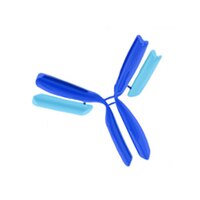OP119 Sigma-AldrichAnti-c-ErbB3 (Ab-4) Mouse mAb (H3.90.6 or Ab90)
Anti-c-ErbB3 (Ab-4), mouse monoclonal, clone H3.90.6 or Ab90, recognizes the ~185 kDa c-ErbB3/HER3 protein in T47D cells and breast carcinoma. It is validated for FC, IF, and IP.
More>> Anti-c-ErbB3 (Ab-4), mouse monoclonal, clone H3.90.6 or Ab90, recognizes the ~185 kDa c-ErbB3/HER3 protein in T47D cells and breast carcinoma. It is validated for FC, IF, and IP. Less<<MSDS (material safety data sheet) or SDS, CoA and CoQ, dossiers, brochures and other available documents.
同义词: Anti-Erythroblastosis Virus, Anti-HER3, Anti-ErbB3
Recommended Products
概述
| Replacement Information |
|---|
重要规格表
| Species Reactivity | Host | Antibody Type |
|---|---|---|
| H | M | Monoclonal Antibody |
Products
| 产品目录编号 | 包装 | 数量 / 包装 | |
|---|---|---|---|
| OP119-100UGCN | 塑胶安瓿;塑胶针药瓶 | 100 μg |
| Product Information | |
|---|---|
| Form | Liquid |
| Formulation | In 10 mM PBS, pH 7.4. |
| Positive control | T-47D cells or breast or prostate carcinoma tissue |
| Preservative | None |
| Quality Level | MQ100 |
| Physicochemical Information |
|---|
| Dimensions |
|---|
| Materials Information |
|---|
| Toxicological Information |
|---|
| Safety Information according to GHS |
|---|
| Safety Information |
|---|
| Product Usage Statements |
|---|
| Packaging Information |
|---|
| Transport Information |
|---|
| Supplemental Information |
|---|
| Specifications |
|---|
| Global Trade Item Number | |
|---|---|
| 产品目录编号 | GTIN |
| OP119-100UGCN | 04055977224962 |
Documentation
Anti-c-ErbB3 (Ab-4) Mouse mAb (H3.90.6 or Ab90) 分析证书
| 标题 | 批号 |
|---|---|
| OP119 |
参考
| 参考信息概述 |
|---|
| Chen, X., et al. 1996. J. Biol. Chem. 271, 7620. Carraway, K.L., III, et al. 1994. J. Biol. Chem. 269, 14303. Ciardiello, F., et al. 1991. Proc. Natl. Acad. Sci. USA 88, 7792. Plowman, G.D., et al. 1990. Proc. Natl. Acad. Sci. USA 87, 4905. Kraus, J.H., et al. 1989. Proc. Natl. Acad. Sci. USA 86, 9193. Shoyab, M., et al. 1989. Science 243, 1074. Kawakami, T., et al. 1986. Mol. Cell. Biol. 6, 4195. |







